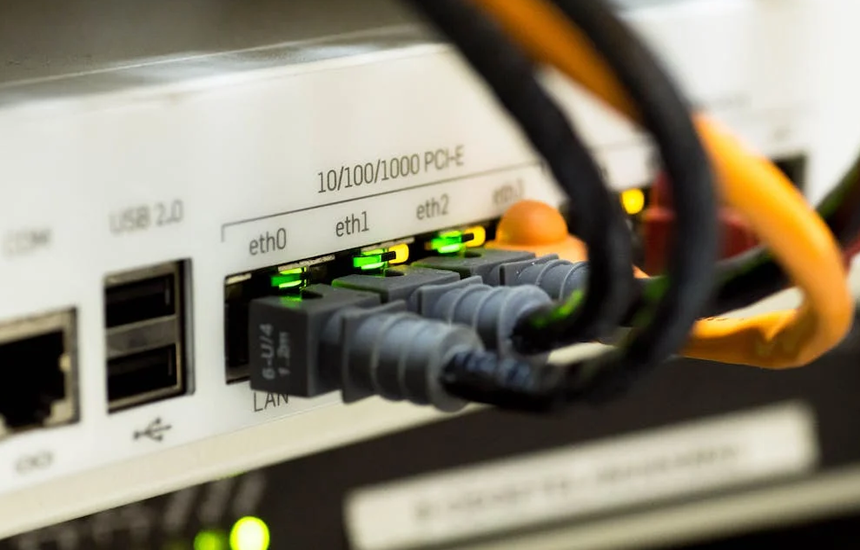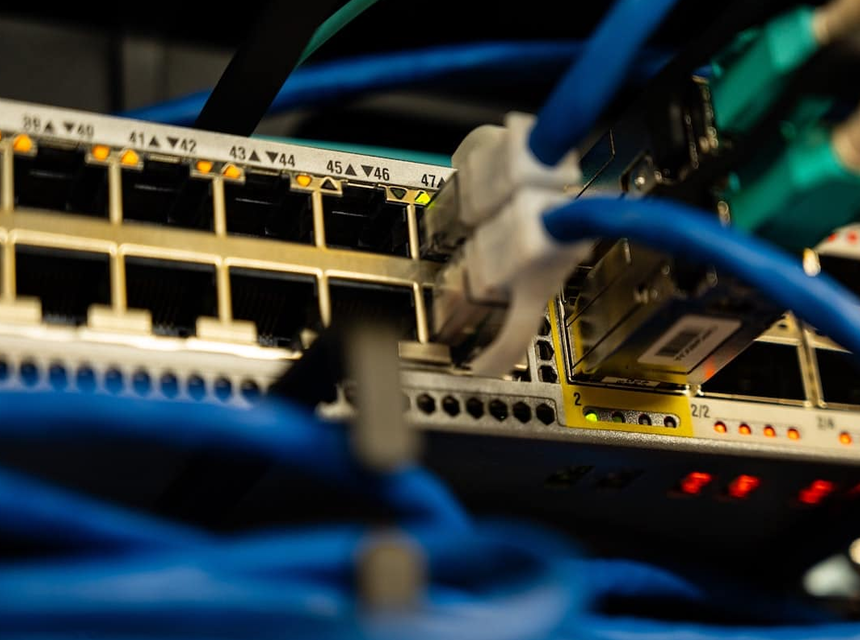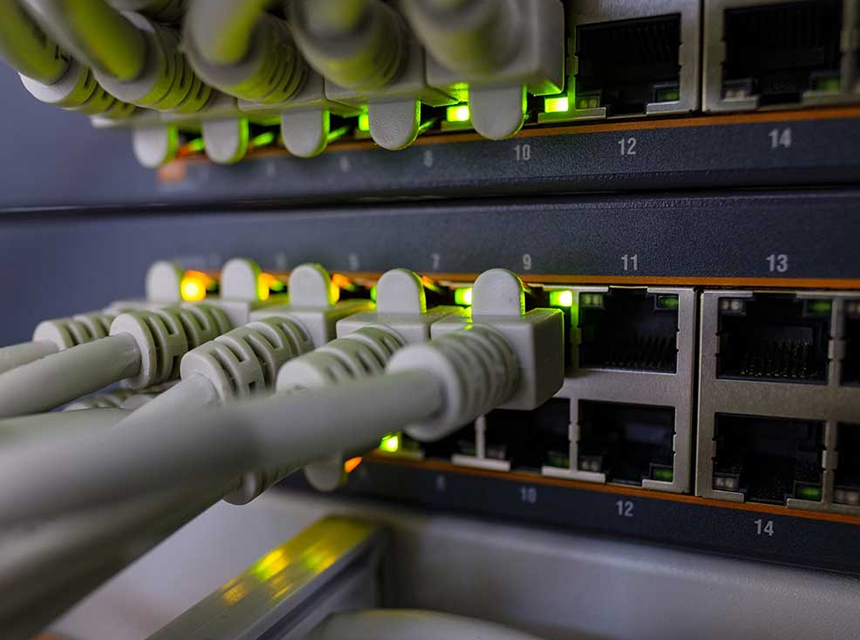- March 8, 2023
- Posted by: Maksim Zavarin
- Category: Blog

Key Differences Between Switch and Hub
This article will tell you what is a switch and a hub and explain the difference between them.
Switches and hubs are common network devices, and physically, they look relatively similar. They also both help transmit data between the devices on the network. However, the fact that they go by different names implies an implicit difference between them. Furthermore, if you’ve shopped for both of them, you’ve likely noticed that they’re also priced differently, with switches often more expensive. So what is the difference between a switch and hub? Keep reading to find out.
What Is a Hub?
In the case of a hub, it’s a device that helps broadcast data to other computers or ethernet-based devices that it’s connected to. It consists of many ports and sends all the data that comes into one port to all the other ports and the devices they’re connected to.
With a hub, you don’t get to choose the destination of the data, so it may not be the best for data privacy. However, it should work well in a small organization where collaboration is essential, even when people use different computers and workstations.
It has also been described as a data convergence point since data from all connected devices converges at the hub before being redistributed to all other devices.

Types of hubs:
Hubs come in three variations, i.e., an active hub, a passive hub, and an intelligent hub. The first comes with a power supply and works to clean and improve signals before relaying the information.
Conversely, the passive hub does nothing but relay the data that comes in. Also, since it doesn’t clean or improve the ingoing signals, there’s no need for a power supply, so it doesn’t have one. It instead draws its power from the connected devices.
An intelligent hub is rarer and slightly smarter than the other two. They come with built-in management software that can both analyze problems in the network and resolve them.
Hub applications:
In addition to being used in small organizations that share data and collaborate on projects, there are several other hub applications. For instance, they can be used in small home networks where all devices, e.g., the PC, printing machine, routers, etc., are connected.
Also, since the data is replicated in all connected devices, any PC connected to a hub can monitor what everyone else on the network is doing. This can help reduce time wasted in an office setting or monitor the type of information your kids are accessing.
What Is a Switch?
As for the network switch, it connects devices on the network to each other and allows them to exchange data packets. More often than not, it also comes with multiple ports. Naturally, this seems like what the hub does in a network, so what differentiates them?
For one, switches can open and close a connection, something a hub can’t do. If the switch is open, data should have no problems getting through to the other device on the network. Conversely, if the switch is closed, data can’t get through.
Switches will also keep a record of addresses for each computer connected to it. That way, data that comes in with an address is processed and redirected to the intended destination, according to ECPI University. However, if there’s no destination address provided, the switch will act more or less like a hub and transmit the data to all connected computers.

Types of switches:
Switches typically come in manageable, unmanageable, LAN, and PoE switch variations. With the manageable switch, you get a console port and IP addresses that can be configured or assigned to the different devices on the network. Unmanageable switches are the opposite, with no console port or configurable IP addresses.
The NETGEAR 5 is an excellent example of an unmanaged switch with extra perks like a quiet fanless design and can be mounted on a desk or wall.
LAN switches are typically used to connect devices in an organization’s internal Local Area Network. The fact that these switches can allocate bandwidth also helps reduce network congestion and bottlenecks.
Finally, PoE switches are Fast Ethernet or Gigabit network switches with integrated Power over Ethernet functionality. It combines the functionality of both a switch and a power source. The TP-Link 24-Port Gigabit Ethernet Switch is an excellent example of a PoE switch, and with its 24 ports, it should work just fine for most small networks.
Switch applications:
Switches can be used to create virtual Local Area Networks and keep a record of all the devices it’s connected to using their MAC addresses. Naturally, this implies they can also be used to connect devices in that particular network.
Next, the fact that switches decide whether data gets transmitted based on addresses available means they help manage data flow across the network. Finally, switches allow data transference in either half or full-duplex modes, which means they can allow for both one-way and two-way communication depending on the configuration.
What Is the Difference Between a Hub and a Switch?
|
Parameter |
Hub |
Switch |
| Definition |
|
|
| Layer |
|
|
| Signal mode |
|
|
| Port |
|
|
| Transmission mode |
|
|
| Physical connectivity |
|
|
| Security |
|
|
| Placement |
|
|
FAQ
What is the difference between a hub, switch, and router?
A hub is the most basic of the three devices, only serving as a data convergence and broadcasting point for all the connected devices. With the switches, you get the ability to redirect data to specific addresses in the network, and it also has some built-in security protocols.
On the other hand, routers can be described as more advanced switches since they go above and beyond forwarding data packets to other devices in the same network. According to Gustavus Adolphus College, they can send data packets through more than one network.
Final Thoughts
Now that you’ve seen the difference between a switch and hub, you should know which one you want for your network. In a home setup where you want to keep an eye on how people are using their devices, a hub might come in handy. The same is true if you’re managing a small organization and trying to keep people from wasting their time on their computers. However, if some of the data is only meant for certain eyes, a switch may be better suited due to its data management capabilities.
References
- https://www.ecpi.edu/blog/how-is-routing-and-switching-important-in-network-security
- https://gustavus.edu/gts/Network_Routers_Versus_Switches

